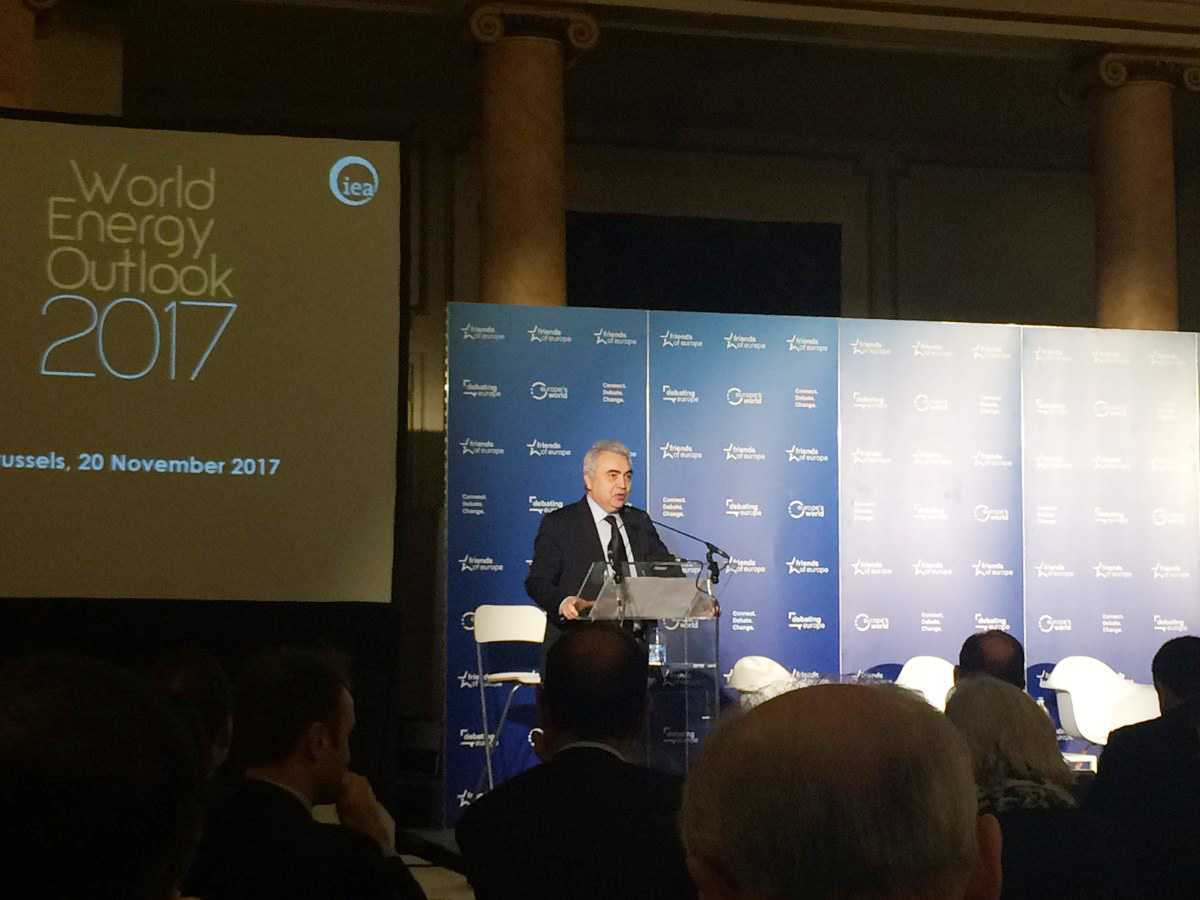LOC17:14
14:14 GMT
 IEA's executive director Dr Fatih Birol speaks during the event organised by the think-tank Friends of Europe in Brussels
IEA's executive director Dr Fatih Birol speaks during the event organised by the think-tank Friends of Europe in Brussels
BRUSSELS, Nov 20 (KUNA) -- Global oil demand will continue to grow to 105 million barrels a day by 2040, albeit at a slower pace, according to the International Energy Agency's Energy Outlook 2017.
Demands by sectors like petrochemicals, trucks, aviation, and shipping will drive up oil demand, said Dr Fatih Birol, the IEA's executive director, presenting the report at an event organised by the think-tank Friends of Europe in Brussels Monday.
He, however, noted that over the next two decades the global energy system is being reshaped by four major forces.
The United States is set to become the undisputed global oil and gas leader; renewables are being deployed rapidly thanks to falling costs; the share of electricity in the energy mix is growing; and China's new economic strategy takes it on a cleaner growth mode, with implications for global energy market.
By the mid-2020s, the United States is projected to become the world's largest LNG exporter and a net oil exporter by the end of that decade, projects the outlook.
This has a major impact on oil and gas markets, challenging incumbent suppliers and provoking a major reorientation of global trade flows, with consumers in Asia accounting for more than 70 percent of global oil and gas imports by 2040.
"In our projections, the 8 mb/d rise in US oil output from 2010 to 2025 would match the highest sustained period of oil output growth by a single country in the history of oil markets.
A 630 bcm increase in US shale gas production over the 15 years from 2008 would comfortably exceed the previous record for gas," noted the IEA chief.
"Gas production in 7-8 years in the US will be 30 percent higher than that of Russia," he stressed.
The outlook projects that global energy needs rise more slowly than in the past but still expand by 30 percent between today and 2040.
This is the equivalent of adding another China and India to today's global demand.
The largest contribution to demand growth - almost 30 percent - comes from India, whose share of global energy use rises to 11 percent by 2040. (end)
nk.sd